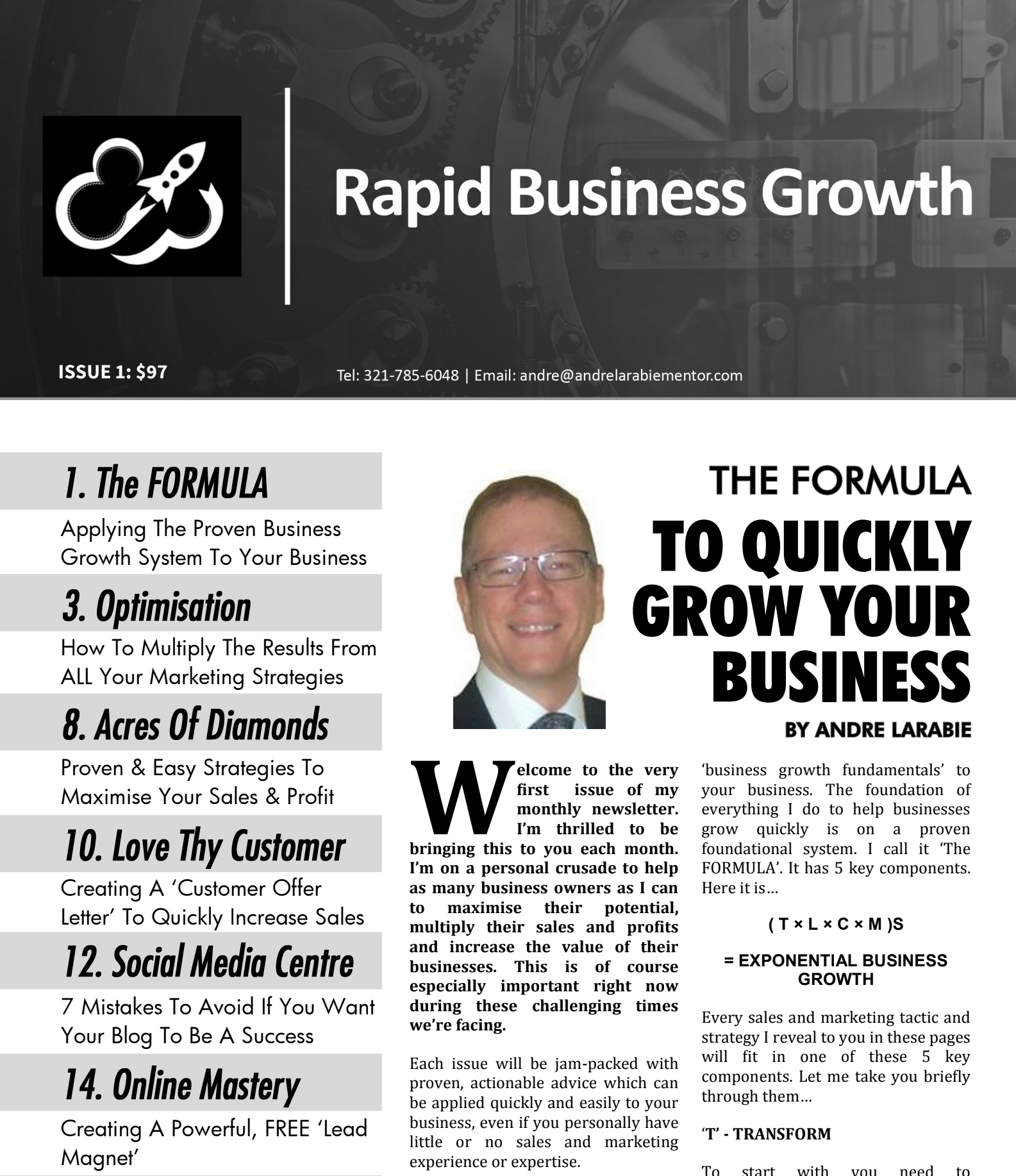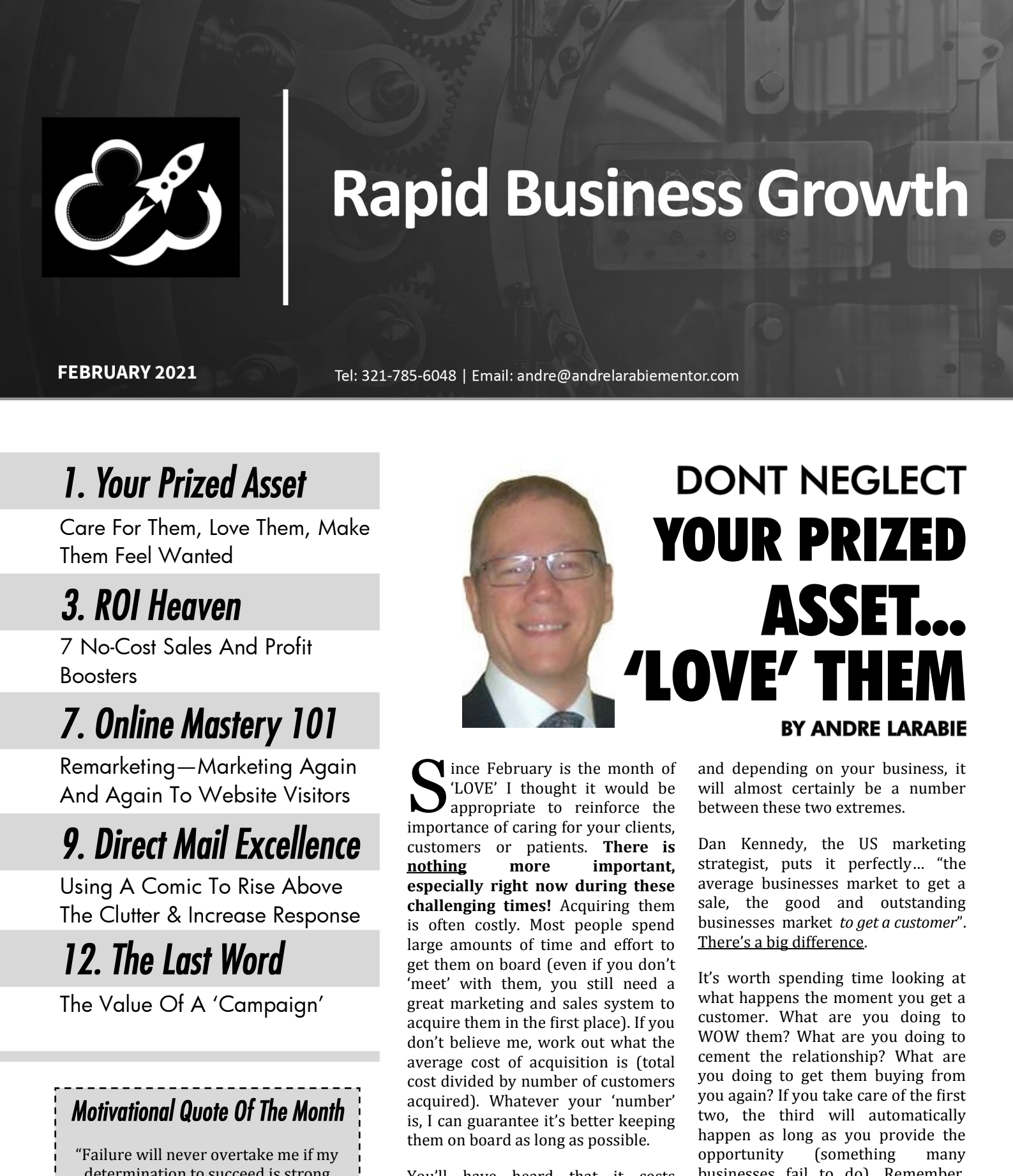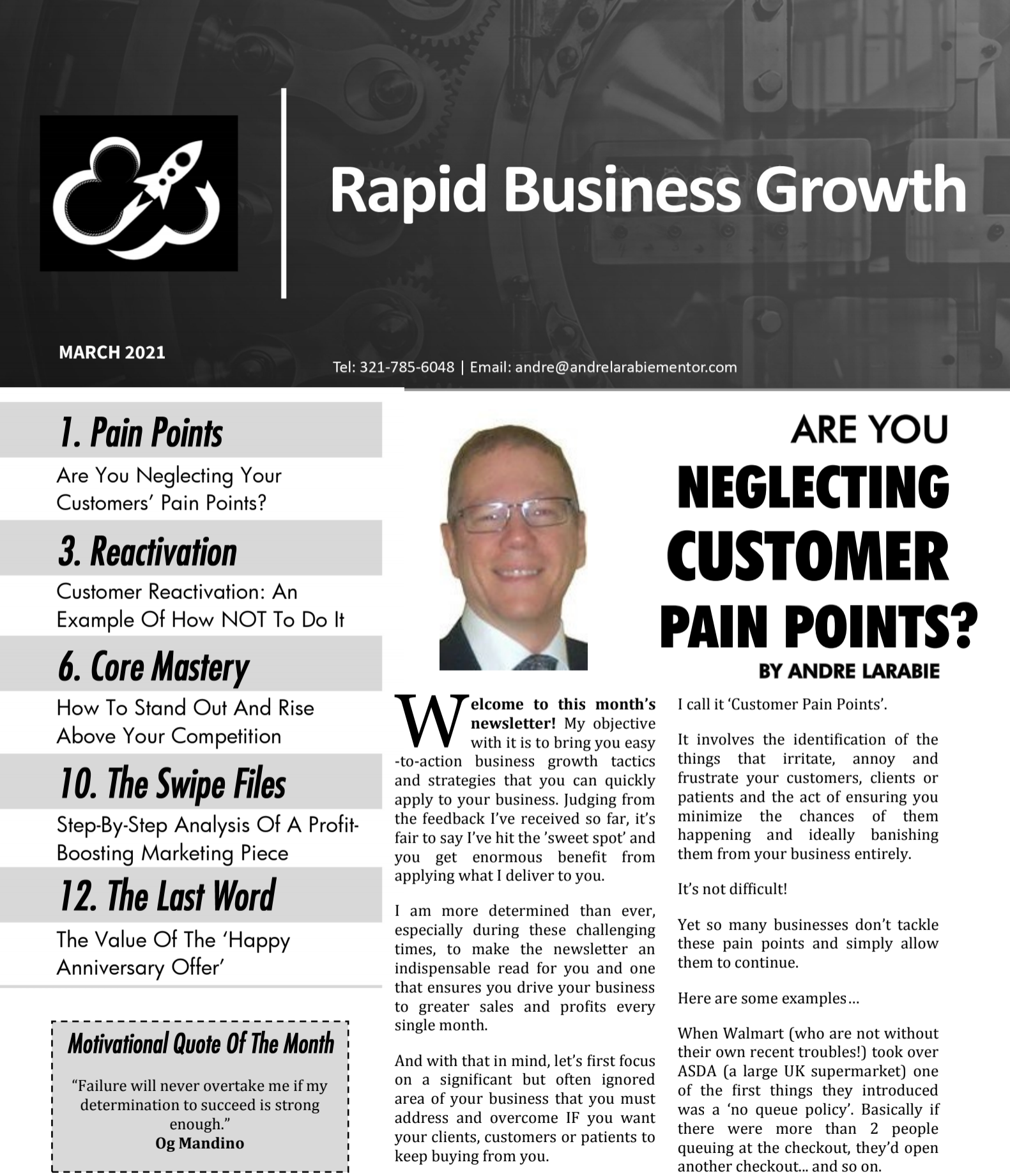| By: André Larabie, CBC, MBA, PhD |
The Internet has introduced new methods of marketing your business, and a List is one of them. To utilize this method, you first need to
understand the term “List.” A list is simply a list of email addresses, and these addresses are for potential or current customers of your business. The counterpart in the pre-cyberspace world is the mailing list.
Mailing lists are still in use, and probably will be as long as the USPS is around (Note how fast postage is rising, and you will understand that hardcopy mail promotions, as a form of advertising, are decreasing significantly so the postal service is getting less revenue from stamps and raising prices to compensate), but the trend is toward using lists, which are implemented entirely online.
Due to the rapid proliferation of junk email, several laws were passed that prohibit mass email promotions and most email marketers are required to have what is called a “double opt-in” method of list creation. The companies that sell list services (most of them abide by the federal regulations) are regulated.
What this means is that before you can add your name to an email list, or become a subscriber to that list, you must perform a procedure where you first click a button to be added, and then click another button on a link that arrives in your email box.
This extra step ensures that you do in fact want to join, and it deters email marketers from adding millions of unsuspecting people to their list and generating millions and billions of email messages (called “spam”).
So the double opt-in requirement for email lists decreases the amount of junk email messages. Note that in the land of real mail, there is not as much regulation because the US government gets paid postage for every junk mail envelope it processes.
Since email is free (so far), these double opt-in regulations had to be implemented to stem the amount of spam, which threatened to make email obsolete. You can understand this when you get 10,000 junk email messages and have to scroll through all of them to find the single email that is valid.
In any case, having a list is a good way to stay in contact with your customers because it ties in to Strategy 1, Direct Response Marketing, nicely. Many business owners publish (or send) a daily email to the members on their list.
These emails are marketing messages that contain promotions or marketing offers or calls to action with backlinks to the website of the business owner. Since email is free, this is a low cost, and highly effective, method of keeping a constant communication with your customers. You can overdo it however, because oftentimes such a bombardment of emails creates an ignore factor: when confronted by hundreds of daily messages, list subscribers simply quit opening them. Usually, your customers will give you a chance to send them good, pertinent information, and if you abuse this chance by sending them daily junk emails, they will then ignore you. So it is going to take some amount of effort to ensure quality, but it is easily worth it.






Recent Comments